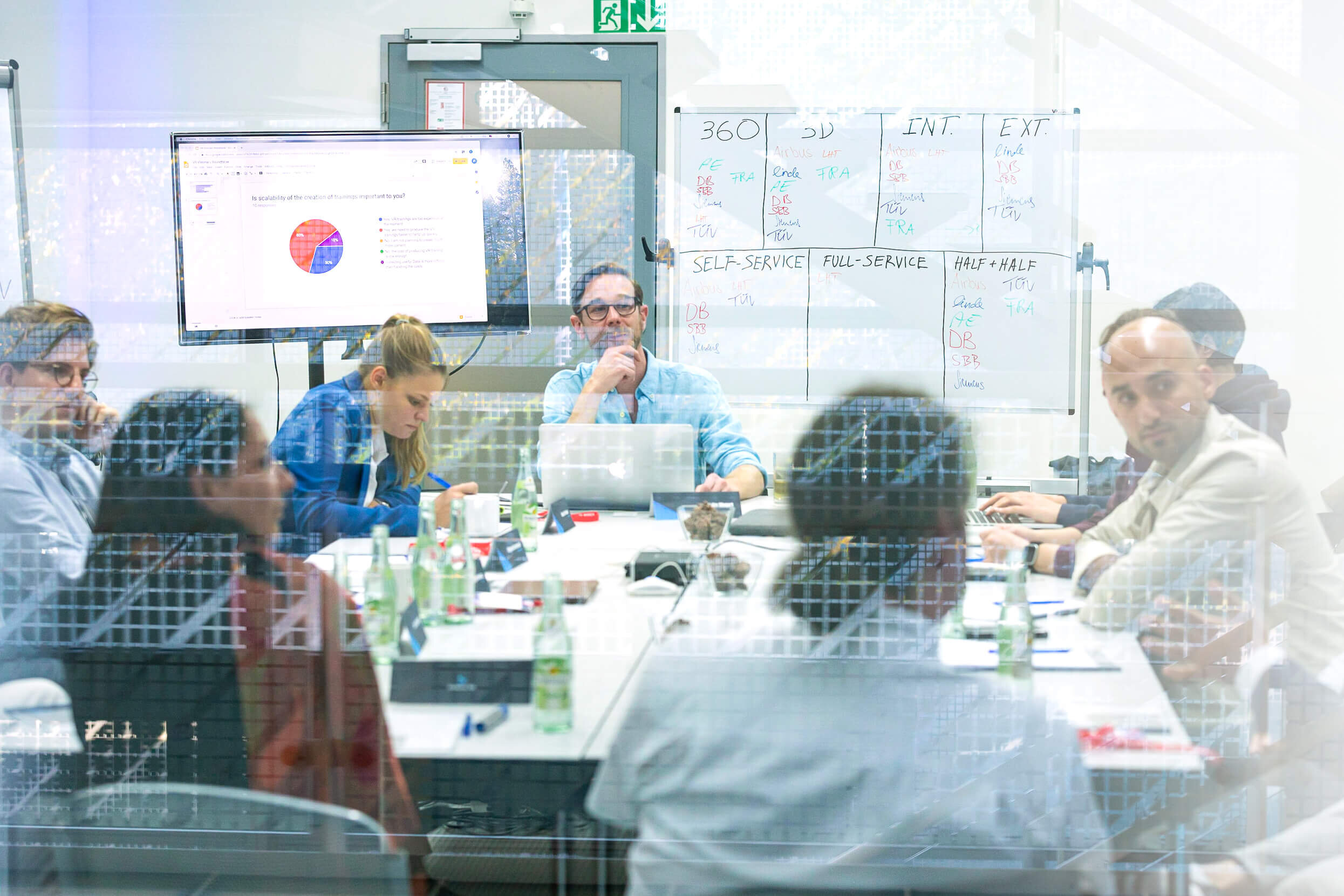Protecting nature is critical to the survival of us all. Demand that zoos transform their barbaric practice of holding wild cats hostage into using their infrastructure and support systems to bring immersive experiences of the exotic cats, in the wild, to their visitors. The technology is here NOW to bring wildcats from all around the world into a head mounted display. As we push that tech forward we will be able to create grids of Internet connected, motion sensor 3D cameras, capturing what wild animals do in their native habitats when people aren’t interfering. It’s the best way to be educated and entertained, and the side benefit is that we are protecting wild spaces for them which means clean air and water for us all.
Check out the history of Augmented Reality Zoos here:
World’s First AR Zoo opened in Tampa, FL March 22, 2019
World’s Second AR Zoo opened in Plantation, FL on Aug 10, 2019.
Thanks to a collaboration by the Westfield Shopping Centers, VidPic AR and Big Cat Rescue you can experience lions, tigers, leopards, jaguars, cougars, snow leopards, bobcats, servals, caracals, sand cats, fishing cats & other exotic wild cats like never before.
Just download the VidPic AR app in the App Store or Google Play. It’s free, light weight, downloads fast, and doesn’t ask for your personal data. Then point your camera at any of the gorgeous big cat posters, like the ones below, to see the cats leap off the page as they run, play, swim, eat and bathe. Hear their sounds, see them having fun and learn what they are really like in the wild.
When the mall spaces are manned we provide 3D videos of the sanctuary cats via Oculus Go. Synapse Summit 2020 is where we introduced a lot of new people to our big cats in VR. The results were quotes like: "This is the best experience I've ever had!", "This is the closest I've ever been to big cats!", "This is the most amazing thing I've ever seen!" and so much more.
As of today, it is possible to actively experience the virtual world using your entire body in the Active Esports Arena
A world’s first for Eindhoven: The Active Esports Arena Eindhoven was opened today with great interest from both the sports world and the tech industry. At the Active Esports Arena you step into the virtual world with your entire body and immerse yourself in a different world, much like the movie Ready Player One by Steven Spielberg. New intelligent software and a seemingly simple high-tech harness turn your body into a controller for a unique gaming experience full of challenges. Previously this was only available for the movie industry and high-tech army training facilities. A nice side effect is that the harness makes you look like a full-fledged action hero both in real life and in the virtual world. To join the game you still have to move to the SX building in Eindhoven where the Active Esports Arena is located.
Frans Janssen, Commercial Director of PSV which is one of the partners of this initiative, spoke during the opening. “PSV has entered into a partnership with the Active Esports Arena because we want to contribute to the vitality of the new generation. This new generation is difficult to reach via traditional channels. They are interested in games and esports, and that's where we find them." says Janssen. "Gaming does not necessarily mean you have to "sit in front of a screen", as shown by Exodus Burned. As a player, you don't even notice the full body workout, because you are completely absorbed in the virtual world. ”
Exodus Burned contains elements of various sports and strategic games. Due to varying difficulty levels, everyone can enjoy the experience at his or her level. "The great thing is that you can really become a better player by playing it repeatedly." says Bob van Oosterhout, founder of Triple Double Sports marketing, "Moreover, the players and the game are beautifully portrayed and it is also exciting to watch as a spectator. Exodus Burned really has everything it takes to become a popular esport with a large crowd, and that in turn offers prospects for sponsors who want to get in touch with the target audience. In short, I am convinced that physical esports will take gaming to the next level.”
“Active gaming with your body as controller, where you sometimes work together and then to end up competing against each other to keep the highest score. That's how you best describe Exodus Burned, the official first active esport.” says Exodus Burned creator Peter Kortenhoeven. “At the moment, we are talking with several European top football clubs to open similar arenas. In addition, there is a desire to organize an Exodus Burned League and tournaments among these clubs."
Bart de Boer, chairman of the Leisure Development Fund Noord-Brabant, who supports this initiative, says: “Exodus Burned and this Active Esports Arena are good examples of the innovative entertainment that we want to stimulate with the LDF Noord-Brabant. It is a unique VR experience, the most active VR experience in the world, which has never been seen before! On behalf of the LDF Noord-Brabant, I congratulate the initiators on the opening of the world's first Active Esports Arena and I wish them the best of luck!”
CONTACT:
Name: Andy Lurling
Email Address: andy@pillowswillow.com
Website URL: https://www.activeesportsarena.com
The VR/AR Association publishes the Israel Report: "Top Israeli VR/AR Companies Changing the World" (Sponsored by Siemens). See how they are impacting and improving people’s lives!
It’s free! Thanks to the sponsorship from Siemens.
Foreword
Israel, a small country in the middle east with the equivalent size of New Jersey, is renowned as the “startup nation”, and is a pioneer in many innovative domains such as robotics, AI, ML, big data and analytics, cybersecurity, ARVR, and in medical and biotechnology-related developments.
The startup ecosystem in Israel (more than 4500 Startups) is one of the leading ecosystems of its kind in the world, with the highest percentage of startups per population size, investments per capita and percentage (4.5%) of GDP spent on R&D than any other country in the world!
As we enter the year2020 and the 4th industrial revolution is underway, new technologies are enabling manufacturers to customize everything, democratize inventions and build smart, autonomous and high productive factories.At Siemens Digital Industries Software, we have introduced the concept of the digital twin which supports our customers' business processes and is critical for them to move from innovative ideas and raw materials to real production and products. AR & VR technologies are part of the next natural step in our quest to better immerse our customers to their products, production lines and factories digital twin, either before they are a reality or while they are functioning, producing and bringing value. AR and VR tech, which not so long ago seemed futuristic, are already rolled out in most of our leading PLM solutions and are aiding our customers in various use cases such as product design, engineering and process review, shop floor work instructions and more.
The future for AR and VR technology seems very promising, as their market value is expected to grow up to 60BN$by the year2025, and manufacturing scenarios are becoming a key focus within enterpriseXR companies. As the technology evolves, key issues will have to be addressed to fully integrate AR and VR tech to current and future manufacturing business processes. Improving accuracy, robustness, and usability will be key for any future developments. I’m confident that the aspiring Israeli AR and VR ecosystem will play a major role in future developments that will help over come the current boundaries and limitations we are struggling with today.
Zvi Feuer
Senior VP
Manufacturing Engineering Software Solutions
Siemens Digital Industries Software
Examples of Solutions Featured
SkillReal signed an OEM agreement with Siemens, the market global leader and integrated its AR technology into Siemens platform, and initiated pilots and sales to global leading manufactures.
How you are impacting and improving people’s lives?
Our AR Technology is reliable and accurate, enabling to support critical use cases in the manufacturing line, enhancing safety, productivity and quality .
Fieldbit's multi-source AR knowledge platform for enterprise field service offers real-time knowledge and guidance through interactive collaboration with experts and digital resources, helping increase first time-fix rates and prevent costly machine downtime.
Inception is a leading next-generation immersive (VR/AR) content network that has brought several XR solutions to the market, including the InceptionVR Entertainment App and Bookful AR.
Inception combines unique proprietary technology, a world class creative studio and cross-platform end-user applications.
Inception has received a strategic investment from RTL Group and is the group’sVR/AR division. Bookful, launched inNovember 2018, and is Inception’s leading product bringing the company firmly into the AR space and creating a magical, playful universe that brings books to life in augmented reality for children.
How you are impacting and improving people’s lives?
The Bookful application is Inception XR’s leading product, an augmented reality app that provides AR experiences for a wide range of children’s books, fromPeter Rabbit toDK’s children’s encyclopedia. Bookful prides itself as the cutting-edge solution to making screen time more productive for kids, in cultivating a strong reading habit over time, offering varied reading levels and achievement-based activities that encourage continued use of the app.
VR/AR Telehealth Platform, XRHealth is harnessing XR technology to deliver healthcare services anywhere, anytime.
How you are impacting and improving people’s lives?
MultipleVR/AR, therapeutic applications for stress, anxiety, memory, chronic pain, hot flashes, neck pain, shoulder pain, spinal cord injuries and more.
TheXRHealthVR/AR telehealth platform strives to enable healthcare providers to precisely adapt treatments to individual patient needs in a fun and engaging way for an improved quality of life.
Contact
Email us if you would like to be featured in the next version of this report!
RSVP for our Enterprise webinar with GE Hitachi, Atheer, AfterNow, enduvo, VRdircet, meetingRoom, General Electric!
Learn the latest case studies and ROI for VR AR in the Enterprise from our Enterprise Committee
Watch the recording of our Healthcare webinar here
Acclaimed Computer Scientist and Virtual Reality Pioneer Joins UCF Faculty
Carolina Cruz-Neira, based in the College of Engineering and Computer Science, will bring cutting-edge tech to benefit students.
Acomputer scientist known worldwide for creating the CAVE system, a fully immersive virtual reality environment within a room-sized cube, has joined the faculty of the University of Central Florida.
Carolina Cruz-Neira, based in the UCF College of Engineering and Computer Science, is a pioneer in the areas of virtual reality and interactive visualization, having created and deployed a variety of technologies that have become standard tools in industry, government and academia.
Cruz-Neira is a member of the National Academy of Engineering, which is considered the highest professional distinction for engineers in the United States. UCF now has seven NAE members on its faculty.
Her CAVE system enables face-to-face discussions while immersing all users in the same shared physical and virtual space. It has been used by many industries such as car manufacturers to anticipate problems and plan accordingly before creating real world versions. Scientists also use the system to explore problems that are difficult to do so in the macro world.
“What really attracted me is that UCF is a vibrant place that fosters innovation, partnerships and unique initiatives centered in student and faculty success.” — Carolina Cruz-Neira
She plans to bring that environment to UCF.
“In engineering, CAVEs are used to better analyze and understand ways to plan things such as factory floors, complex 3D constructions, flow visualization and simulation analysis,” Cruz-Neira says. “In sciences like biology, chemistry, astrophysics or mathematics they allow users to experience three-dimensional structures, concepts and data and exploration of worlds that are too small, too large, too hostile or just plain impossible in ways that support faster and more complete understanding.”
Cruz-Neira plans to build several CAVEs at UCF which would help students get hands-on experience with some of the latest technology being used in industry and could propel new ideas and research projects across multiple disciplines.
Recently, Cruz-Neira was named a fellow of the Institute for Electronics and Electrical Engineers. The IEEE distinction recognizes her significant scientific contributions that have advanced the field of virtual reality. IEEE is a professional association focused on advancing technology for humanity with 400,000+ members in 160 countries.
Throughout her career, Cruz-Neira has worked to expand opportunities for others, spearheading several open-source initiatives to disseminate and grow VR technologies, and leading entrepreneurial initiatives to commercialize research results.
A prolific researcher, Cruz-Neira has been awarded more than $75 million in grants, contracts, and donations, and has authored more than 100 scientific articles, book chapters, magazine editorials and other publications. She is also recognized for having founded and led highly successful virtual reality research centers, including the Virtual Reality Applications Center at Iowa State University, the Louisiana Immersive Technologies Enterprise and the Emerging Analytics Center at the University of Arkansas at Little Rock.
Among her numerous national and international recognitions, Cruz-Neira is an Association of Computing Machinery Computer Pioneer. She is a recipient of the IEEE Virtual Reality Technical Achievement Award and the Distinguished Career Award from the International Digital Media & Arts Society. She has appeared as a subject expert on TV shows and podcasts and served as a keynote speaker at conferences and forums worldwide.
Cruz-Neira joined UCF along with her longstanding research team of 15 years – husband Dirk Reiners and research scientist Carsten Neumann – crediting UCF’s strong reputation in computer science.
“UCF is a nationally-recognized leader in computer science, modeling and simulation, and in virtual and augmented reality,” Cruz-Neira says. “What really attracted me is that UCF is a vibrant place that fosters innovation, partnerships and unique initiatives centered in student and faculty success. UCF has demonstrated that it can rapidly change and adapt to the needs of the region, that it can quickly expand to take advantage of new trends in technology, and that it can be a model for 21st century academic institutions. I definitely want to be part of all this!”
Before joining UCF, she was the Donaghey Distinguished Professor in Information Sciences and the executive director of the Emerging Analytics Center at the University of Arkansas at Little Rock and an Arkansas Research Scholar through the Arkansas Research Alliance.
She holds a doctoral and a master’s degree in electrical engineering and computer science from the University of Illinois in Chicago; and a bachelor’s degree in systems engineering from the Universidad Metropolitana in Caracas, Venezuela.
For more info contact:
Carol Ann Dykes Logue
Director, Innovation Districts Programs & Operations
Office of Partnerships & Innovation
University of Central Florida
3259 Progress Drive
Orlando, FL 32826
407-635-9882 office
407-489-5990 cell
AARP develops virtual reality for seniors
Come see the latest in Virtual and Augmented Reality at the upcoming VR/AR Global Summits in North America and Europe. See here
WASHINGTON (ABC7) — Just slip on a pair of virtual reality glasses, and you really step into another world.
With virtual reality you are in a self-contained experience. The folks at AARP, think VR can help keep our elderly loved ones safe. Spokesperson Andy Miller talking about seniors, “when they don't leave their house because they have a fear of something, that's a bad thing. social isolation has the same effect as smoking 15 cigarettes a day. AARP’s app is called Alcove.
For instance, you can connect with an elder parent who is living alone remotely via the virtual reality app. You can traverse a home with them, and each room has something to interact with.
You'll see as you go through there are different rooms in the home. each room has a different topic or theme. and look there those little avatars.
U.S. Air Force to Integrate ThirdEye’s X2 Glasses for Mission Training
More of the world’s military is adopting AR and MR solutions to better support training and work of personnel – and now that includes the U.S. Air Force.
ThirdEye, a leader in augmented and mixed reality (MR) enterprise solutions, has partnered with 3D Media, a technology development firm that specializes in virtual and augmented reality solutions for the enterprise, to improve training and human performance for flight line maintainers and flight crews in the Air Force’s 7th Bomb Wing for the B-1. With ThirdEye’s X2 MR Glasses, the lightest MR glasses on the market at just 300 grams, airmen will find improved safety, efficiency and proficiency when working on the airframes to ensure they are mission ready.
By wearing the X2 MR Glasses, flight crews and flight line maintainers can connect with experts in any environment via the glasses’ built-in proprietary 3D SLAM (simultaneous localization and mapping) system and CAD modeling and overlay, where step-by-step technical instructions and drawings will project onto the X2 MR Glasses display. The glasses also take screenshots and enlarge images for better visibility. Flight crews and maintainers are then able to open and view documents via voice command, while working hands-free, without worrying about the Wi-Fi connection because of the X2 MR Glasses’ 5G capabilities.
U.S. Air Force to Incorporate ThirdEye's X2 MR Glasses in Airframe Training
The partnership will help airmen prepare for missions by bettering safety, increasing efficiency and improving proficiency when working on one of the Air Force's leading airframes
PRINCETON, N.J., Feb. 11, 2020 /PRNewswire/ -- ThirdEye, a leader in augmented and mixed reality (MR) enterprise solutions, today announces its partnership with 3D Media, a technology development firm that specializes in virtual and augmented reality solutions for the enterprise, to improve training and human performance for flight line maintainers and flight crews for one of the Air Force's leading airframes. With ThirdEye's X2 MR Glasses, the lightest MR glasses on the market at just 300 grams, personnel will find improved safety, efficiency and proficiency when working on the airframes to ensure they are mission ready.
Last year, on November 13, 3D Media was awarded a $1 million Small Business Innovation Research (SBIR) grant from AFWERX to build AR tools to improve training for airmen. After conducting research on the available AR and MR glasses on the market today, ThirdEye's track record of execution and success in military environments was a key reason its X2 MR Glasses were chosen for research and development purposes, along with a larger deployment into the Air Force and U.S. Department of Defense. The X2 MR Glasses align with the military's needs, from its industrial capabilities, platform built for working applications, and ability to connect with subject matter experts in harsh environments.
By wearing the X2 MR Glasses, flight crews and flight line maintainers can connect with experts in any environment via the glasses' built-in proprietary 3D SLAM (simultaneous localization and mapping) system and CAD modeling and overlay, where step-by-step technical instructions and drawings will project onto the X2 MR Glasses display. The glasses also take screenshots and enlarge images for better visibility. Flight crews and maintainers are then able to open and view documents via voice command, while working hands-free, without worrying about the Wi-Fi connection because of the X2 MR Glasses' 5G capabilities.
"As more of the world's military adopt AR and MR solutions to better support the training and work of personnel, we're honored to be working with 3D Media to contribute to the U.S. Air Force's efforts and increase the safety of our airmen," said Nick Cherukuri, Founder and CEO of ThirdEye. "From our previous work in the military, ThirdEye's X2 MR Glasses have undergone drop tests, so we know it's ready to support airmen however needed, no matter where they are."
The X2 MR Glasses fit a wide field of view with powerful sensors, providing advanced MR features that are not available on a monocular device, all while remaining entirely hands-free – important for being out in the field where wires can be a potential hazard. The X2 MR Glasses also run on the latest Android operating system (OS) allowing software to be easily ported onto the glasses.
"When we go into a project, we never assume what the outcome is going to be – the answer comes from collaborating with other experts. By partnering with ThirdEye, we're arming airmen with X2 MR Glasses to significantly improve their day-to-day," said Daryl Roy, CEO and Founder of 3D Media. "I believe that augmented reality's largest opportunity is in the area of human performance, where there's no margin for error. ThirdEye has proven to be successful in military environments, and with life and death literally on the line, it's important to arm our military personnel with the best."
For more information on ThirdEye, visit www.thirdeyegen.com. For more information on 3D Media, visit www.3dmedia.biz.
About ThirdEye Gen
ThirdEye is a leader in smart glasses and AR/MR software development. Its X Series Mixed Reality Glasses and ThirdEye Workspace App software platforms are being used by organizations around the world.
MR glasses bring about a new era of hands-free human interaction by directly interacting with surrounding objects through the Internet of Things (IoT) or placing digital information directly into your field of view.
While many companies today use just smart glasses or only software, ThirdEye provides a full end-to-end package for its customers and employees. It has hundreds of software developers creating apps ranging from games to entertainment to enterprise applications and its products retail around the world. From everyday consumers to Fortune 500 companies, ThirdEye is bringing the power of mixed reality everywhere. Mixed reality has the potential to change the way the world operates, and ThirdEye's vision is to help generate the future.
About 3D Media
3D Media is a technology development firm that specializes in virtual reality and augmented reality solutions for the enterprise. Its tools utilize cutting edge digital visualization, object recognition, analytic capture and reporting to meet the challenges that its clients face. 3D Media utilizes proprietary processes to design, create and deliver high quality technological solutions. It has developed solutions for some of the world's top organizations including The State of Louisiana, Exxon Mobil, United Vision Logistics, the United States Air Force and more.
Media Contact
Elsa Anschuetz
Uproar PR for ThirdEye Gen
eanschuetz@uproarpr.com
321.236.0102 x233
SOURCE ThirdEye Gen, Inc.
Related Links
Four Pragmatic Ways Immersive Healthcare Can Help Alleviate the Corona Virus Outbreak
As on 7th February 2020, there have been 31, 535 coronavirus cases registered, out of which a shocking 4826 or 15% belong to a critical condition. The death toll has risen to 638 within a fortnight. Additionally, the novel Coronavirus has spread to at least 27 countries. The coronavirus pandemic is a real cause for concern and has put everybody on high alert.
Several corporations, including LG, Facebook and Razer, are restricting employees’ travel to China, over fears of the Coronavirus. Moreover, employees who returned from China are to work from home strictly.
On a side note, desperate air passengers are spotted wearing plastic bottles and motorbike helmets, in an attempt to stay uninfected. One flight from Shanghai to Perth had numerous passengers wearing face masks. Moreover, the same flight even got a special disinfecting spray down following it's landing.
While sophisticated technologies can indeed slow and possibly even eradicate the coronavirus’ impact, time is of the essence. Every passing minute could mark more cases and deaths.
Enter: Immersive Healthcare Technologies
Leveraging the power of VR (Virtual Reality) and AR (Augmented Reality) to improve the current healthcare scenario is at the core of Immersive Healthcare. This technology has consistently revolutionized conventional healthcare systems, and has the potential to impact the coronavirus outbreak significantly:
Preventive Medicinal Strategies Become Economic & Feasible
Best practices like washing your hands or immunization are amongst preventive healthcare measures that help prevent contracting a particular infection. However, in the absence of mass education and awareness campaigns, the majority of the population remains oblivious to preventive measures.
Cultivating preventive measures by setting up courses and getting healthcare professionals to take up the training are complicated. Conventional training approaches, such as reading manuals or conducting classes, are very expensive and time consuming.
In contrast, immersive technologies help effortlessly train patients and even healthcare professionals in slowing down and preventing deadly outbreaks like the Coronavirus. For instance, specialized AR/VR training designed for pathological scenarios is immensely useful.
VR/AR powered training is easy to deploy as a manual classroom setup isn’t required. Moreover, the training is value-centric and practical, thus enabling students/doctors to immediately apply learnt concepts in the real world.
“Immersive preventive medicine could very well be the trump card in eradicating the Coronavirus, and ensuring such outbreaks are predicted and well dealt with in the future.”
Hospital Construction is Streamlined & Accelerated
Alarming times require drastic efforts, and China swiftly rose to the occasion. The city of Wuhan constructed a makeshift emergency hospital in a meagre 10 days for the coronavirus casualties. The facility can serve up to 1,000 patients at a time.
However, every second saved in construction is an extra second available for treatment and recovery. Fortunately, VR can help initiate hospital development and planning by enabling healthcare providers to walk-through facilities using a VR device like HTC Vive, before even drafting a blueprint. This visualization helps attain a much-needed head start that could prove pivotal for efficient construction and subsequent patients' onboarding.
“Immersive technologies can immensely fine-tune quick hospital construction, resulting in guaranteed and enhanced care administered to patients.”
As a result, governments can roll out hospitals much faster and save more lives in the process.
Heightened Decisiveness & Geographical Awareness
The deadly Coronavirus is on the verge of being declared a global pandemic. In a crisis like this, immersive maps powered by VR & AR are invaluable, as they enable real-time tracking of the Coronavirus plight.
Researchers and global healthcare strategists can quickly scan the globe and identify "hot" Coronavirus affected areas. Moreover, AI can even aid in the prediction of which regions might get struck by the Coronavirus in the future.
“Just imagine how much more effective a 3D globe with real-time coronavirus statistical updates would be than static excel sheets requiring tons of manual effort. We need futuristic immersive healthcare solutions to tackle the new challenges of today.”
Immersive technologies provide golden nuggets of information, which can significantly improve decisiveness, and help devise effective strategies to control and contain a possible spread of the Coronavirus.
Sharper Diagnosis & Treatment Accuracy
The infamous Coronavirus is alas, a new infection that has taken the world by storm. What's disheartening is that there is still no vaccine to prevent the Coronavirus infection.
The time it takes for a doctor to diagnose and confirm a coronavirus infection is a determining factor in the subsequent treatment. Early diagnosis is vital, and VR powered healthcare setup can exponentially aid in conducting accurate diagnoses.
Immersive Healthcare provides comprehensive visualization tools to aid diagnosis and treatment. As a result, doctors can create virtual models of a patient’s anatomy. Therefore, early detection of the Coronavirus could be made possible.
What’s Next?
The intervention of immersive technologies is transforming and will continue to renovate the entire healthcare landscape, only if we spread the word about this revolutionary breakthrough.
In an attempt to evangelize immersive healthcare, organizations conducted several impact programs in the MENA region, to highlight the essence of VR/AR in the field of medicine.
If you are curious about why immersive healthcare is the future of medicine, contact Dr. Sana Farid at mena@thevrara.com
RSVP for our Healthcare Webinar with Kessler Foundation, Oxford Medical, Univ of Florida, CleanBox, Artiness
See new use cases and applications for Medical solutions using VR AR technologies! Plus, participate in our live Q&A!
Call for Sponsors: VR/AR in Education Report
If interested to Sponsor, email info@thevrara.com
The VR/AR Association is producing an Education Report, an update to our previous Report version (Q4 2018) here, which spotlights some of the best, education-focused companies working in the immersive technologies field right now.
By the year 2025, immersive technologies of XR including augmented reality, virtual reality and mixed reality—will be as ubiquitous as mobile devices in the opinion of several consulting firms and Associations. As the Education Committee, we have come together globally to share best practices, reflections, experiences, case studies, meetings, where collectively work together to build global standards for VR & AR Technology.
VR/AR in Education
97% of students would like to study a VR course.
Education is expected to be the 4th biggest sector for VR investments.
VR in education is predicted to be a $200 million industry by 2020 and $700 million by 2025.
Almost 80% of teachers have access to virtual reality devices, but only 6.87% use them regularly in the educational process
93% of teachers said that their students would be excited to use virtual reality
7 out of 10 teachers want to use VR to simulate experiences that are relevant to the material covered in class
According to Statista research, 92% of respondents in the USA know the term Virtual Reality
New technologies are an emerging industry creating employment opportunities and entrepreneurial possibilities. According to projections set out by the European Commission, market demands for qualified information and communications technology (ICT) specialists will not be met, seeing a shortfall of up to 750,000 ICT professionals in 2025. VR/AR products are amongst those with some of the highest market demand in the ICT sector.
Many case studies demonstrate the impact and benefits of VR/AR in Education and Training today. Immersive experiences in virtual classrooms, immersive simulators, virtual labs, 3d content creation, 360º videos experiences, are some examples you can find in schools, vocational training centers…all around the world.
The VR/AR Education Industry Sector Report includes a wide range of companies and the kinds of customers they serve, showing how impactful their VR and AR solutions have become to education community. A quick look through this report also makes it clear just how targeted many of these companies are, with products and services often aimed squarely at specific topics and use cases.
As part of our new Mission “Jumping into the Future of XR in Education, diving in Blue Oceans Vision 2025”, we invite you to participate in our new VRARA Education Ecosystem.
The Report will be promoted globally and presented at events around the world.
About VR/AR Association
The VR/AR Association (VRARA) is an international organization designed to foster collaboration between innovative companies and people in the VR and AR ecosystem that accelerates growth, research and education, and develops best practices and guidelines. VRARA has over 4300 companies and 28,000 professionals registered, over 70 chapters globally, and 25 industry committees. VRARA programs & initiatives are designed to accelerate anyone’s growth, knowledge, and connections. Learn more here
If interested to Sponsor, email info@thevrara.com
Doctors without Borders and Augmented Reality
In recent years, the number of people living far from their homes because of violence and conflicts around the world has been steadily increasing. Doctors Without Borders (DWB/MSF) has doubled the number of projects managed that focus on displaced people, refugees and migrants from different parts of the world.
“Forced to flee” is the installation that the international organization mounted on the sidewalk of a principal Train Station in Buenos Aires, Argentina, and it focuses on the medical care and mental health that Doctors Without Borders gives to millions of women and girls who have been forced to flee their homes because of violence.
The exhibition was made of three large structures: a giant main cube, more than 7 meters per side and 6 meters high, and two triangular satellite structures where you can see several photographs taken in contexts where Doctors Without Borders teams provide medical care for displaced women and girls, migrants and refugees. Through this installation, the NGO displays testimonies and the chronicles of the situation in which they were assisted.
Also, they decided to innovate incorporating the technology that takes the exhibition to a virtual plane. By downloading the free-app CamOnApp, from Apple Store or Google Play, interested users can view the installation and walk through it, wherever they are, using only their smartphones. The aim of this initiative is to expand the message in situ and spread using Augmented Reality tech.
In this way, not only the visitors that go to the exhibition in trains stations can be impacted by the big structure with photos and messages. With Augmented Reality, the audience is expanded and the installation is relocated to any place or surface.
Contact info:
Florencia Moltini
The VR/AR Association NYC Chapter welcomes Karen McFarlane, President of the American Marketing Association New York to its Board of Advisors
The VR/AR Association is happy to announce that marketing innovator and strategist, Karen McFarlane joins the chapter as Advisor.
As a 25-year marketing veteran, Karen brings a deep knowledge of brand strategy, omnichannel marketing, digital content, technology, and customer experience to the fold. She currently serves as President of the American Marketing Association New York and Chief Marketing Officer of Kaye Media Partners, a strategic marketing practice that specializes in technology, innovation, and revenue generation.
“Digital transformation has pushed organizations into a new realm of customer engagement compelling us to reshape how we think about doing business. This is especially true for marketers who must respond to high levels of industry disruption by creating new ways to differentiate, add value, and interact with buyers,” noted McFarlane. “Only by leveraging innovative technologies like AR and VR, can we tap our creativity and unleash opportunities that will upend the customer experience. But that will only happen if we immerse ourselves in the possibilities. That’s why I’m excited to be part of an organization that is leading the way in the marketing capital of the world.”
New York City Chapter President Gordon Meyer added “We are looking forward to working with Karen on chapter strategy in support of our mission to build connections between innovative companies and people in the VR and AR ecosystem. Through a strategic collaboration with AMA New York, we will be able to amplify our reach through research projects and education as well as connect our unique member audiences in meaningful and relevant ways.”
Recently Mr. Meyer has announced a push to align with fellow associations in New York City as well as highlight the company and corporate members of the association within the tri-state area. “We’re building a strong, well-informed and resourceful network within the ecosystem of our fellow associations. Karen brings a wealth of knowledge and a powerful perspective as well as a great positive energy to the team and I’m excited to have her on board.”
For more information on the NYC Chapter of the VRARA visit: https://www.thevrara.com/nyc-chapter/
VividQ and Compound Photonics partner to deliver an integrated solution for real 3D holographic display targeted at augmented reality devices
The collaboration brings to the market solutions for productising high quality, real-time holographic display, to accelerate the adoption of AR/MR devices across a range of industrial and consumer applications.
The results of the collaboration will be officially unveiled at SPIE AR/VR/MR in San Francisco between 2nd-4th February, where the first complete demonstrator of a holographic AR headset will be presented.
VividQ and Compound Photonics partner to deliver an integrated solution for real 3D holographic display targeted at augmented reality devices
London, 31st January, 2020 – VividQ, a UK-based company offering the first complete software framework for 3D holographic display, has partnered with Compound Photonics US Corporation (CP), a leading provider of compact high-resolution microdisplays for Augmented Reality (AR) and Mixed Reality (MR) applications. The collaboration brings to the market solutions for productising high image quality, real-time holographic display, to accelerate the adoption of AR/MR devices across a range of industrial and consumer applications.
Holographic display uses the interference properties of light to generate highly realistic 3D projections of any real or computer generated objects. The holograms are generated by reflecting laser light from a high resolution display that is capable of modulating the phase of the reflected light wave-front. The phase LCoS (Liquid Crystal on Silicon) displays produced by CP are ideal for this application as they give extremely precise phase control and high resolution in compact and lightweight form factor. Computing the phase pattern required to project a high quality holographic image on an LCoS display is a hugely difficult computational task. VividQ provides the algorithms and software to calculate and project holograms in real-time on low power compute platforms.
The collaboration was borne out of the need for new high performance, integrated hardware and software solutions for holographic display, designed specifically for AR/MR applications. VividQ and CP work closely to overcome the constraints and meet the requirements that will be demanded to enable future AR products to break into the consumer market. AR devices making use of these CP/VividQ solutions will give end users the ultimate 3D visual experience, solving many of the major issues in AR today such as eye-fatigue and the vergence-accommodation conflict (VAC). These solutions will provide sufficiently bright images at low power and reduce the overall size and weight of future headset designs.
The results of the collaboration will be officially unveiled at SPIE AR/VR/MR in San Francisco between 2nd-4th February, where the first complete demonstrator of a holographic AR headset will be presented. Constructed by VividQ and powered by its software, with the phase LCoS microdisplay subsystem and integration support from Compound Photonics, this demonstrator headset allows companies interested in leveraging holographic technology in their products a first hand look at the superior capabilities of real-time, high quality holographic display for their target applications.
Darran Milne, CEO and co-founder of VividQ, said: “We are excited to work with Compound Photonics to accelerate the adoption of 3D holographic display. At VividQ we believe that the close integration of hardware and software across the AR ecosystem is necessary to deliver the best solutions to the market and in Compound Photonics we found a partner that shares this vision. The AR headset demonstrator presented at SPIE AR/VR/MR is a revolutionary piece of technology showcasing the results of our collaboration to date.”
Yiwan Wong, CEO of Compound Photonics, commented: “CP has been actively developing our LCoS phase display solutions featuring small (3.015 μm) pixel pitch, up to 4+ million available pixels and the high performance display drive to address 3D holographic display requirements. We see VividQ’s computational holography software as a key enabler to providing a complete solution for holographic AR/MR applications. We are extremely excited about this collaboration with VividQ which demonstrates to the industry the feasibility of a high quality 3D holographic display system for future AR headsets.”
About VividQ
VividQ is a deep tech software company with world-leading expertise in 3D holography. The company was founded in 2017 by a team of expert engineers, mathematicians and computer scientists from the Universities of Cambridge, Oxford and St Andrews, who solved key technology barriers in the adoption of holographic display. VividQ’s software brings real-time Computer Generated Holography (CGH) to everyday applications. VividQ collaborates with leading technology companies to create the most realistic, immersive and sensational experiences. Learn more at www.vivid-q.com
About Compound Photonics
Compound Photonics is a pioneer in compact high-resolution microdisplay technologies. The company’s solutions are optimized to serve the AR/MR markets where high performance, small form factor, and low power consumption are most critical. Compound Photonics’ microdisplays enable engineers to innovate and create cutting edge consumer and industrial products that can greatly enhance the lives of people. Learn more at www.compoundphotonics.com.
Press contact
Oliver Tozer
oliver.tozer@withpr.co.uk
+ 44 (0) 20 7249 7769
Innoactive Launches VR Training Visionary Roundtable
participating corporations…
TL:DR - On November 18, 2019, VR/AR Association Germany moderated a full day roundtable on Enterprise VR learning . Representatives from Transportation, Energy, Logistics and Aviation attended to better understand the challenges and benefits of scalable immersive training
First a Little Background
VR training for employees has numerous benefits which is convincing more and more companies to consider the technology as it evolves and awareness grows. However, Virtual Reality is still novel to most workplaces and therefore not as easily integrated into standard training procedures. Adopting VR comes with its challenges and hurdles just as regular innovation does. How can we fix this? Consequently, we have decided to help tackle this problem by uniting like-minded peers who are at the forefront of discussing VR in their organisation. Together with HTC and Unity and the support of VRARA, Innoactive has launched a platform for industry professionals which gives them the opportunity to exchange best practices. We decided to create our VR Training Visionary Roundtable
Structure of the Event
The main discussion is in the form of a classic roundtable which gathers a group of like minded visionaries from different industries. By doing so, we unite them to exchange about overcoming VR training adoption hurdles together. The moderated roundtables are designed to open a discussion amongst participants to help them overcome VR Adoption hurdles. These hurdles include difficulty with hardware roll out, content distribution and permissions, funding, workers safety issues and much more. As a result of listening and engaging with industry professionals, the community works together to solve these hurdles.
The Roundtable also incorporates “demo” sessions at the end of the event. During these sessions, participants can try out each other’s VR training solutions. As well as this, a dedicated Best Practices Instance on the Innoactive Hub aggregates the VR Trainings and allows all the Event Community members to access and try diverse applications.
One Final Thought
The next step of the VR Training Visionary Roundtable includes a workshop for storyboarding and calculating business cases. This gives participants the opportunity to get inspired before designing their next Virtual Reality training. In doing so participants can also learn new ways of estimating the value of a business case.
From VR Training Newbie to Rollout Master in 4 Days
https://www.vr-training-summit.innoactive.de/
Call for Sponsors: Enterprise Industry Report
If interested to sponsor, email info@thevrara.com
This VR/AR Enterprise Industry Sector Report will include a wide range of companies and the kinds of customers they serve, showing how impactful their VR and AR solutions have become to enterprise customers. A quick look through this report also makes it clear just how targeted many of these companies are, with products and services often aimed squarely at specific industries and use cases.
Our 2019 report included 100+ companies!
Worldwide spending on VR/AR is forecasted at $20B in 2019 with a five-year compound annual growth rate (CAGR) of 69.6% (IDC). According to Gartner, the use of VR and AR are one of six top technology workplace trends that will drive the digital workplace and “are ready for mainstream businesses.” And, Nielsen concluded enterprises adopting VR/AR training technology will save $13.5B that would otherwise have been spent on traditional training that includes instructors, dedicated learning spaces and traveling to remote facilities.
There are plenty of other examples and predictions that demonstrate the importance of VR and AR to forward-thinking enterprises in the immediate future. Successful trials (and increasing number of deployments) of VR and AR in enterprises are getting the competitors of early adopters companies to start recognizing that they may be missing out on the real strategic advantage they can achieve.
See the 2019 report version here
If interested to sponsor, email info@thevrara.com
VR/AR Association Commences Ahmedabad Chapter in India
Industry leaders gather in Ahmedabad
On 7th January 2020, VR/AR Association launched the Ahmedabad chapter. With this chapter launch, the association has now established a foothold in Ahmedabad, the center for technological innovation in Gujarat, India.
With chapters in all major cities across the globe, the VR/AR Association has added another flourishing community of VR/AR experts to the association that encompasses over 4300 organizations (companies, brands, universities, etc.) and 28,000 professionals as members globally. The chapters or communities felicitate local networking and knowledge sharing via meetup events held periodically among VR and AR services and solution providers, content creators, organizations and institutions as well as brands and consumers who wish to utilize VR and AR technology for their business. The community supports a cohesive global network of member-based chapters that together leverage accelerated connections and knowledge sharing within the industry.
Pradeep Khanna, Executive Director APAC VRARA, spoke at length about the current scenario of Augmented and Virtual Reality across the globe. He elucidated how emerging technologies like 5G and edge computing are going to push developments in immersive technology even further by providing advantages like zero latency. He further advised members to explore as the tipping point of adoption for the immersive technology is near and how this will be a disruptive force in the future for a multitude of industries.
Another special guest, President - Ganpat University, Padma Shri Ganpatbhai Patel, addressed the audience and emphasized on the importance of innovation in the field. He further went on to discuss the significance of amalgamating academia and industries towards a more scalable growth not just for the technology, but all stakeholders invested in immersive technology. Mr. Sunil Parekh, Chief Corporate Affairs Advisor for Zydus Group was also in attendance at the launch event.
“The global augmented and virtual reality market size was $11.35 billion in 2017, and the augmented and virtual reality market forecast is projected to reach $571.42 billion by 2025, growing at a CAGR of 63.3% from 2018 to 2025. All major technology giants like Google, Facebook, Snap and China’s BAT are focusing efforts on VR/AR development. As the industry is growing at an unprecedented rate our efforts are focused at creating an inclusive ecosystem that shall provide access and advantages of this rapid growth in the immersive technology industry to all members.” stated chapter president Rohit Purohit, Chapter President and CEO – ViitorCloud Technologies.
Keyur Bhalavat chapter vice president & CEO - Plutomen Technologies further added, “The Ahmedabad association serves as a platform for members to interact and share with like-minded people with a shared focus towards VR/AR development leading to a culmination of ideas among the brightest minds in the industry. The chapter will be cultivating more members to expand the foothold of the community across entire Gujarat. With constant communication and periodic meetups, we aim to create a bridge between the vast network of global leaders and community members.”
With the establishment of a dedicated chapter organizations involved in VR/AR industry will be welcome to attend the VRARA chapter events, while members old and new will relish additional benefits related to unique research, reports and case studies developed by members, discounts to industry events, promotion opportunities and direct access to other members on an international scale.
In the final hours of the launch event, the members of the Ahmedabad association discussed at length about how the community will move forward and establish itself and members as a global entity in immersive technology development. Brimming with potential, the VR/AR Association Ahmedabad chapter could help Gujarat achieve a global footprint in the AR/VR industry propelling the emerging technology market for the entire state.
For more details please visit thevrara.com/india
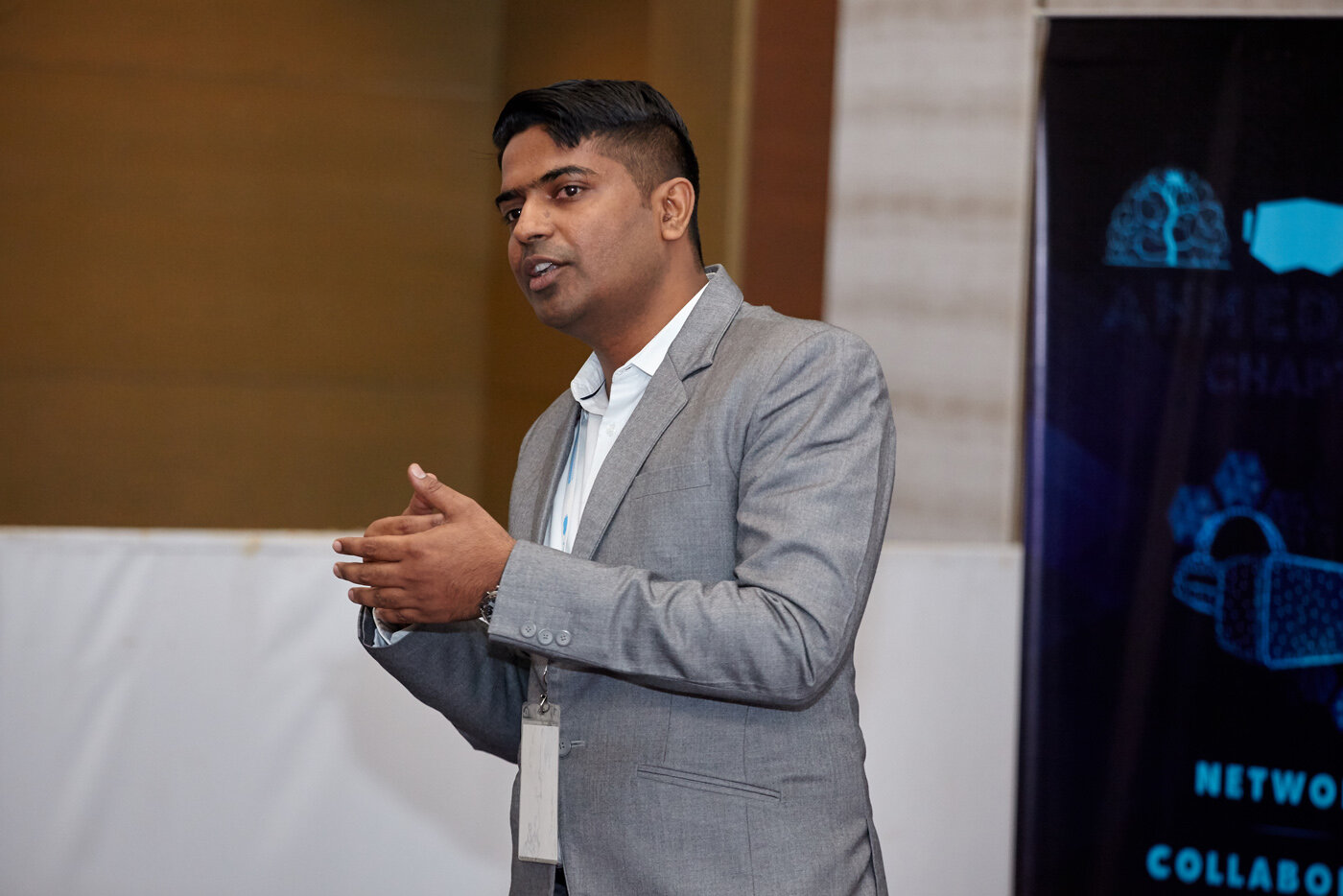

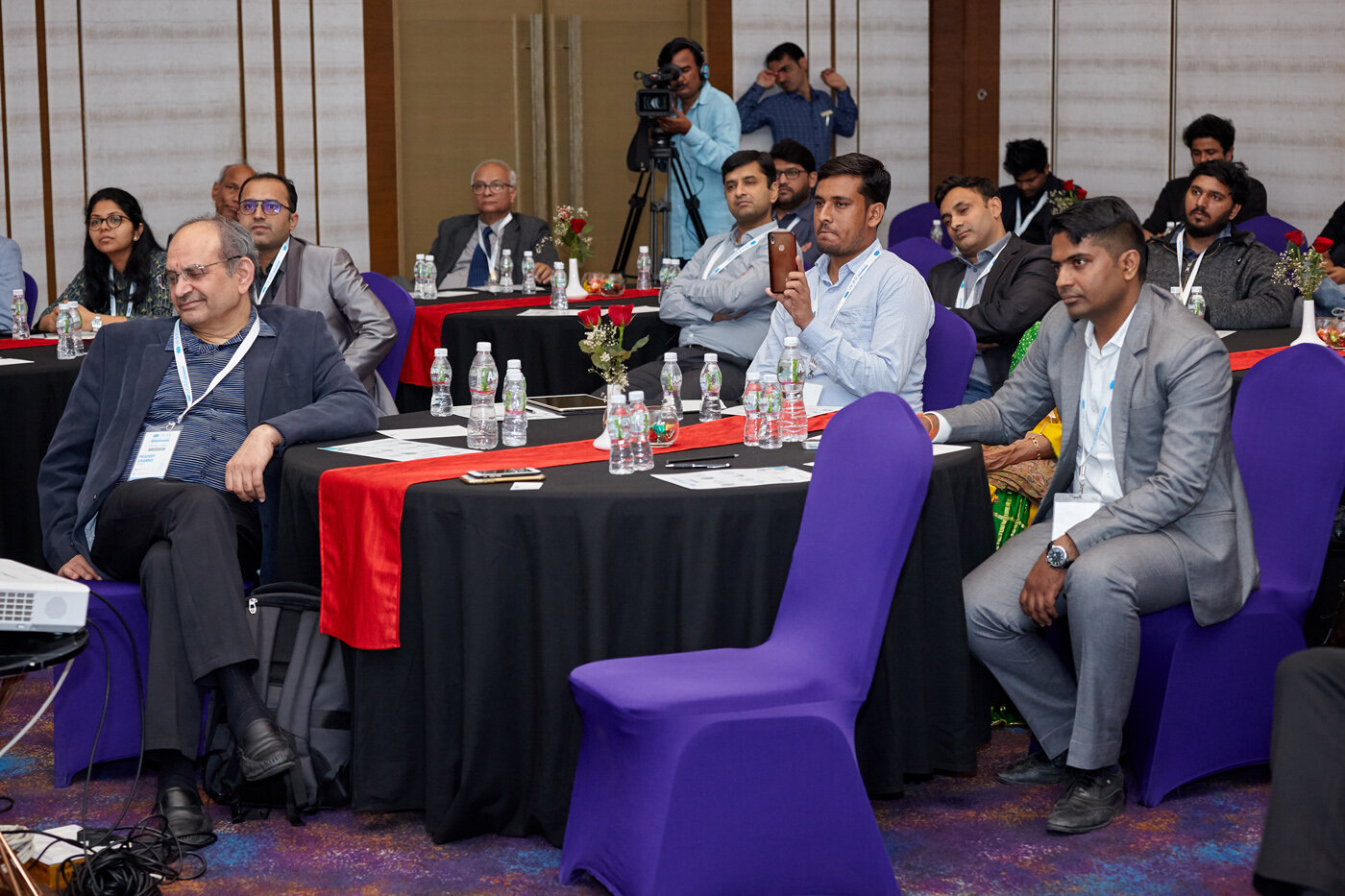
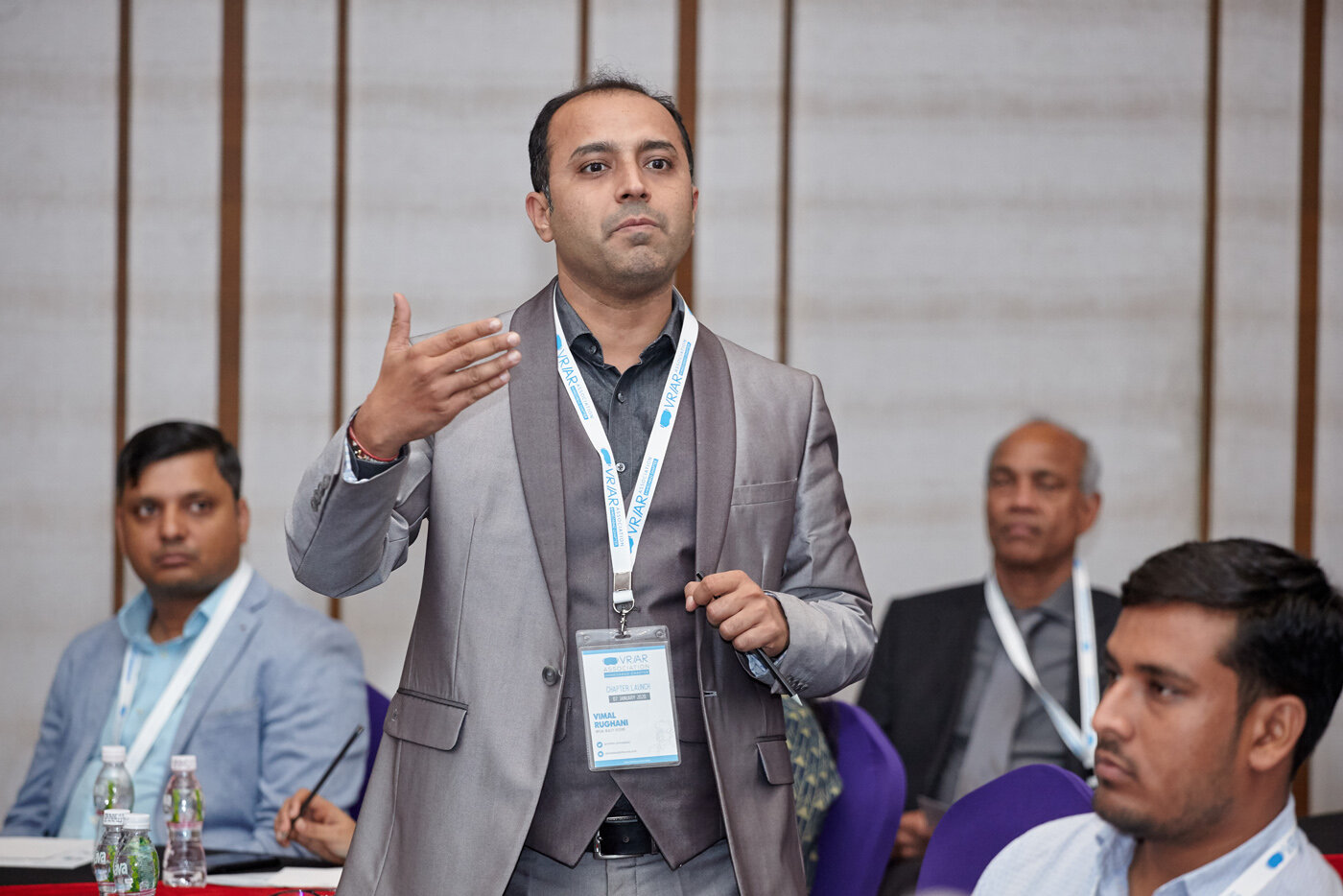

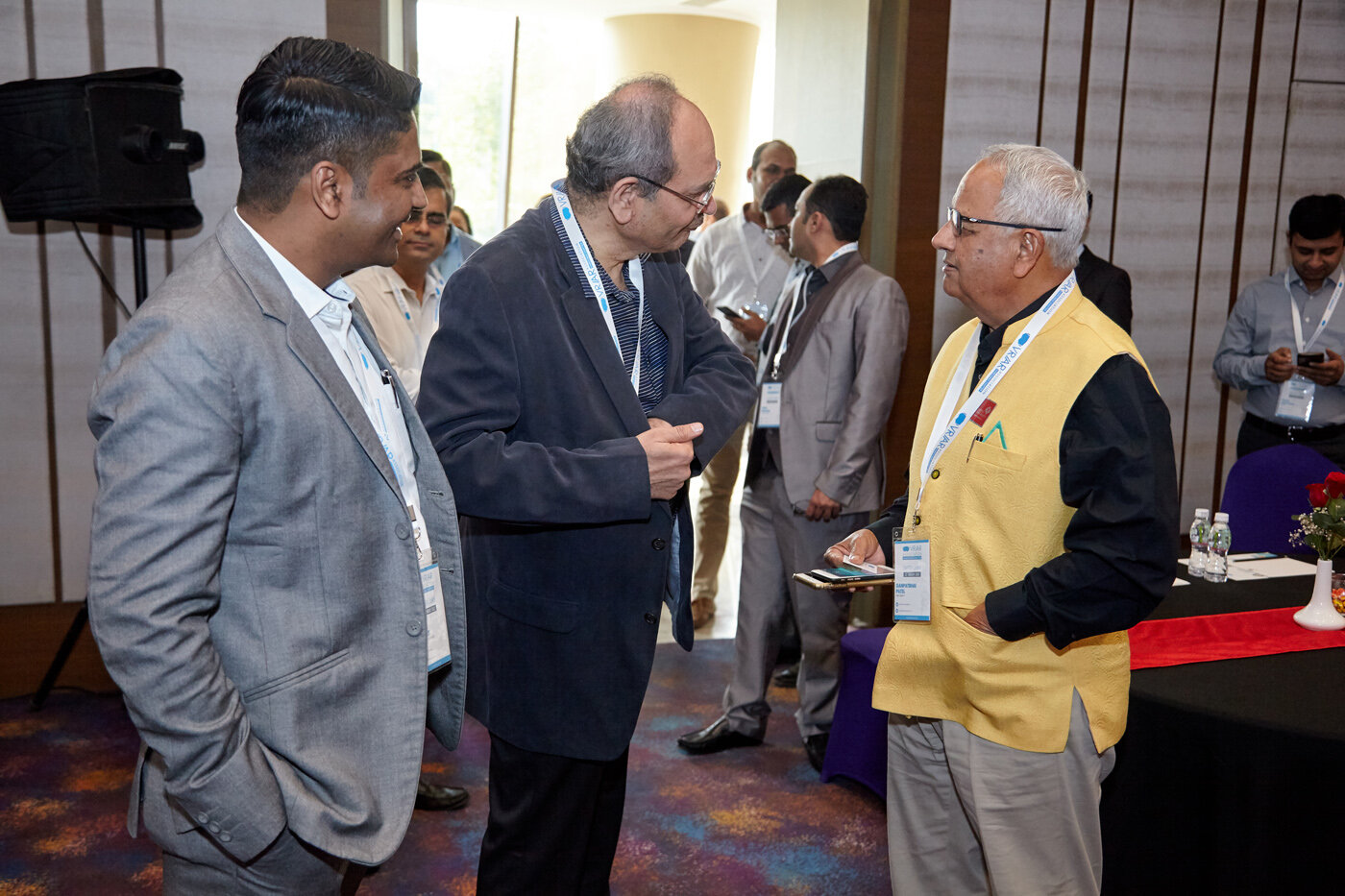
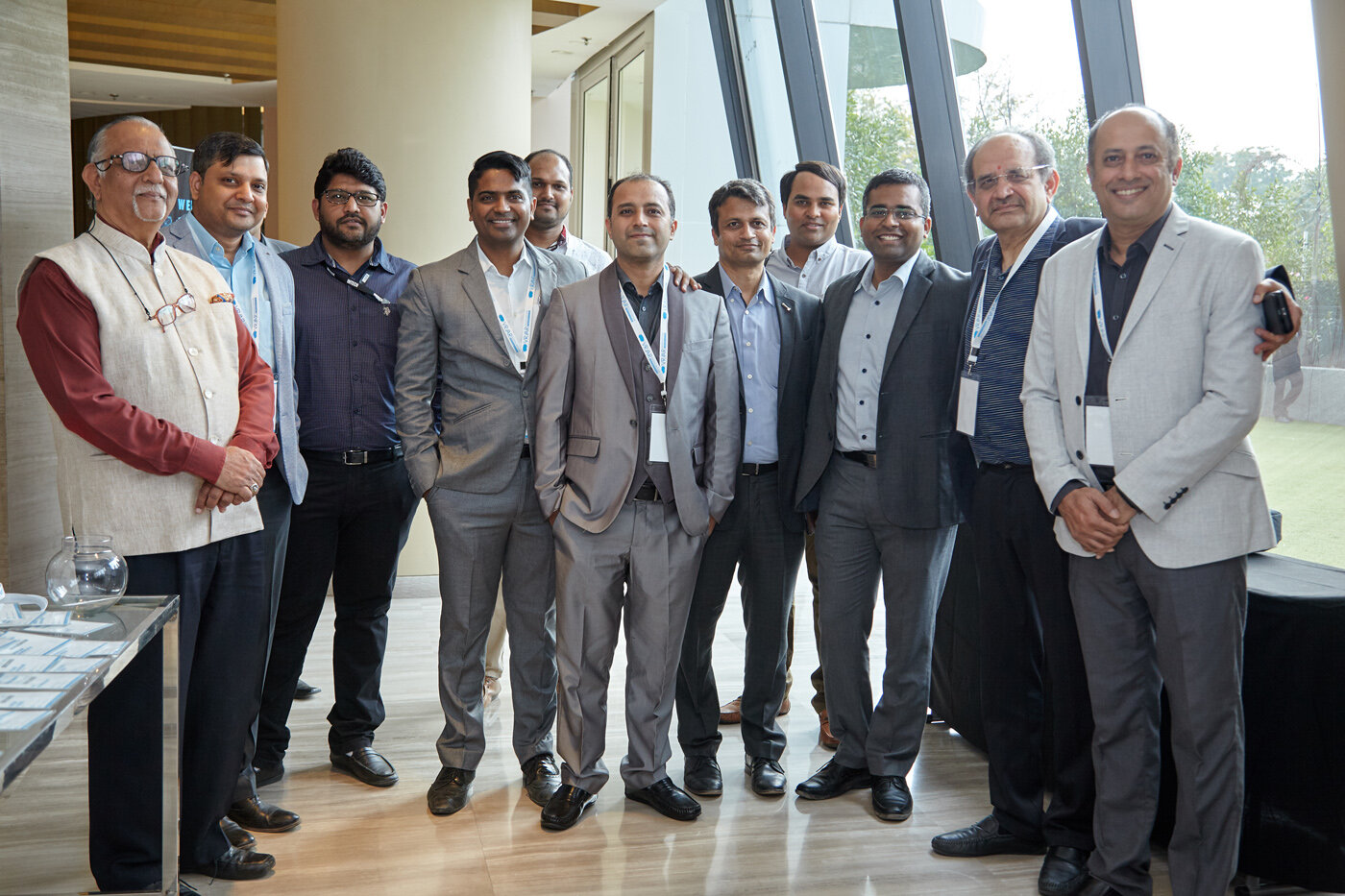
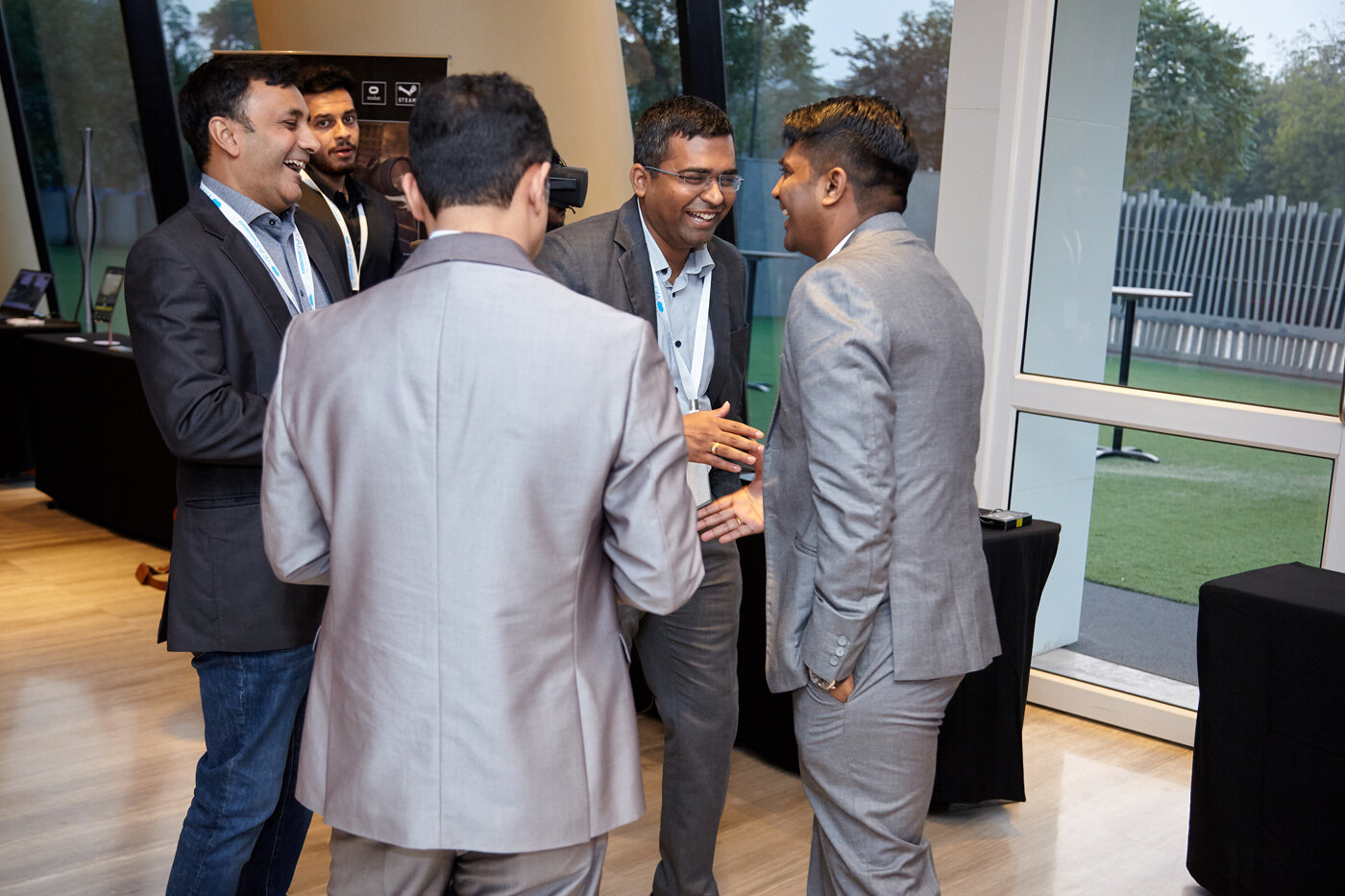
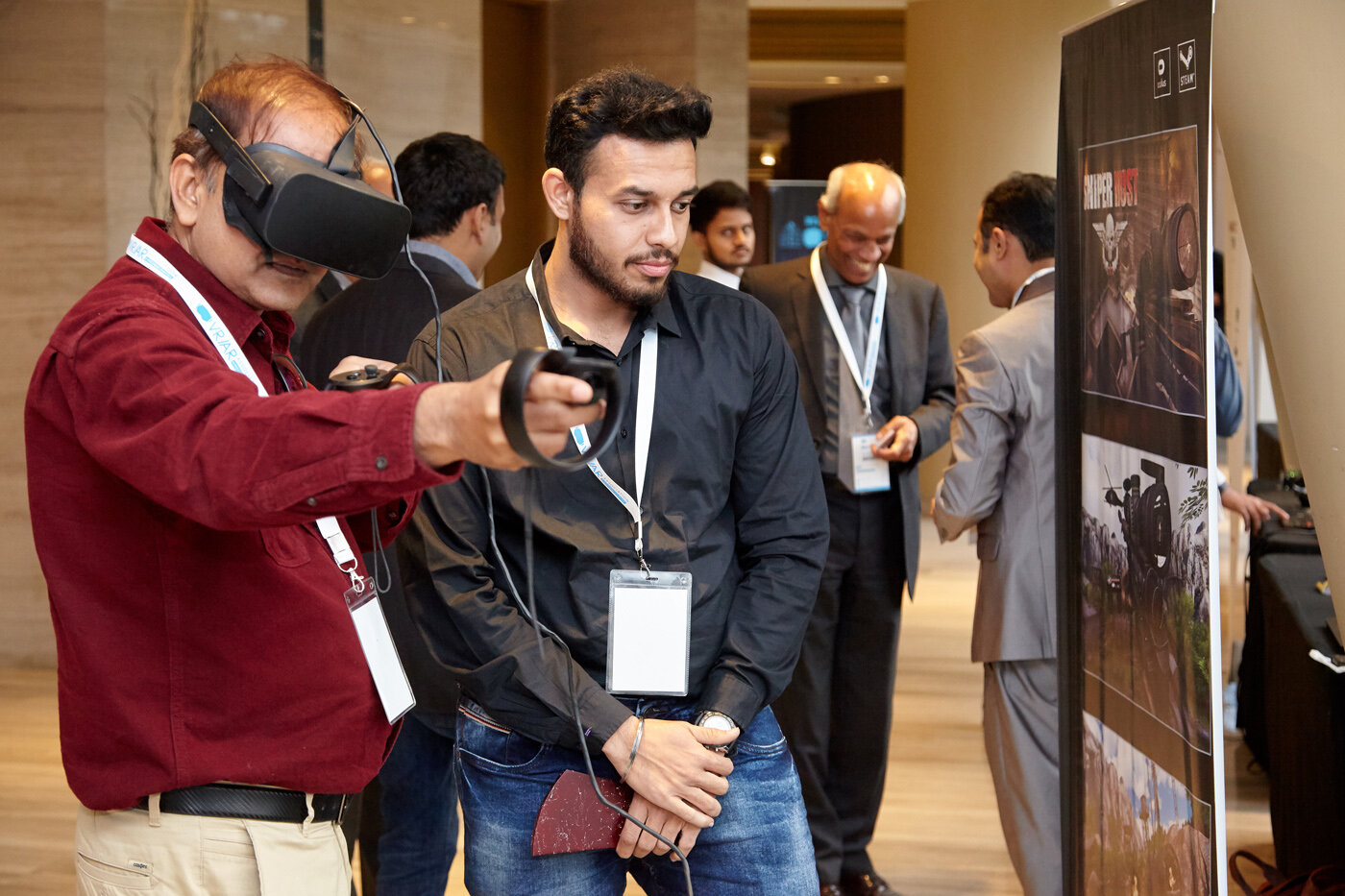

For more details please visit https://www.thevrara.com/india
Unity vs Unreal — Which one to choose for VR/AR development?
CircuitStream’s comparison article for early-stage XR developers who are choosing their development platform and are unsure whether to go with Unity3D or Unreal Engine 4. In this guide, CircuitStream are covering pro's and con's for each game engine and make it easier for XR devs to make a decision. More here
















